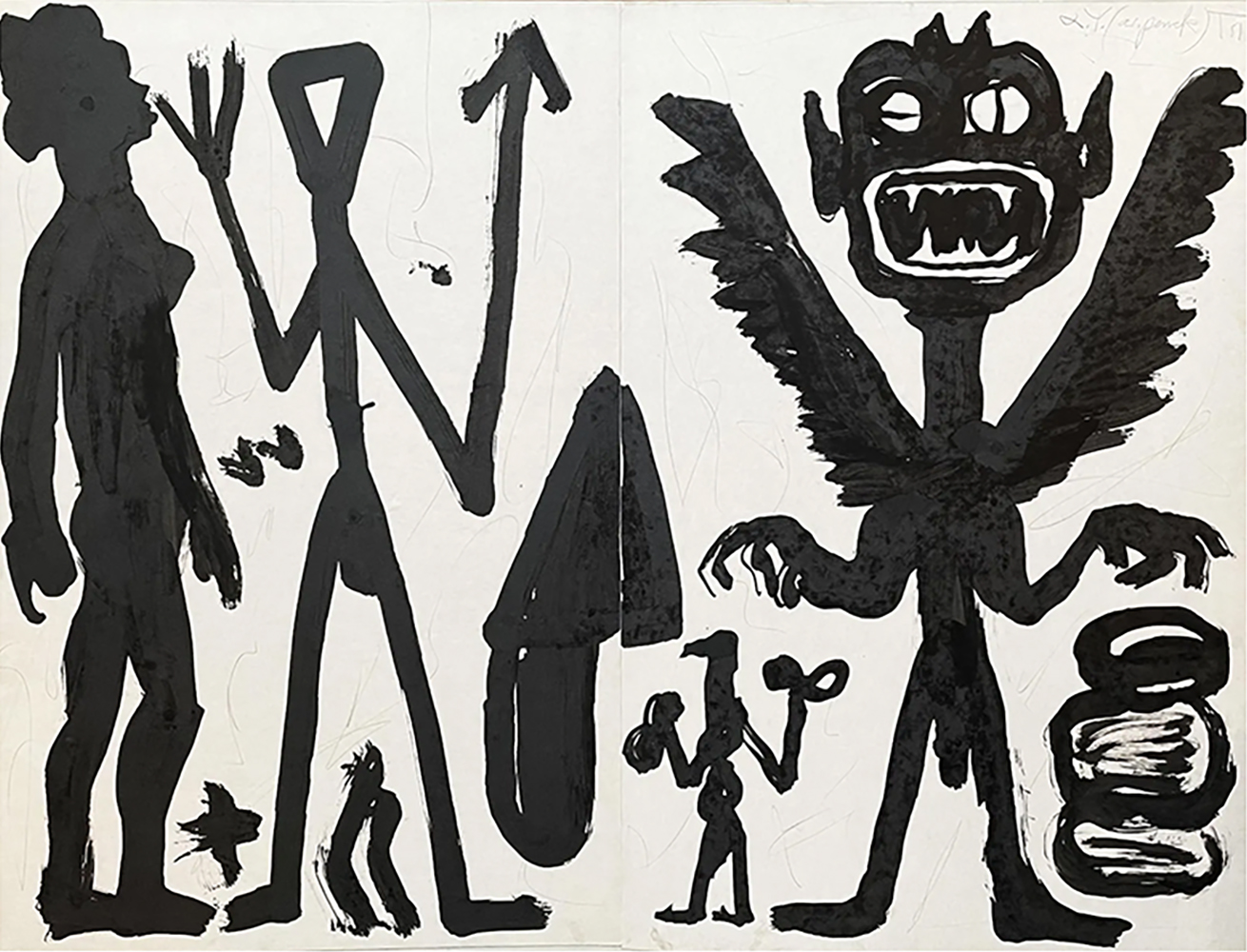MASTERS ON PAPER
Far from being confined to studies and experiments, works on paper represent important modes of art-making in their own right. This viewing room features the work of artists who demonstrate the breadth of ways in which one can deploy the humble media of paper to extraordinary ends. Revisiting different artistic periods and contexts, the exhibition draws out both contrasts and comparisons between artists, modes of representation and the continuing vitality of paper as an artistic medium.
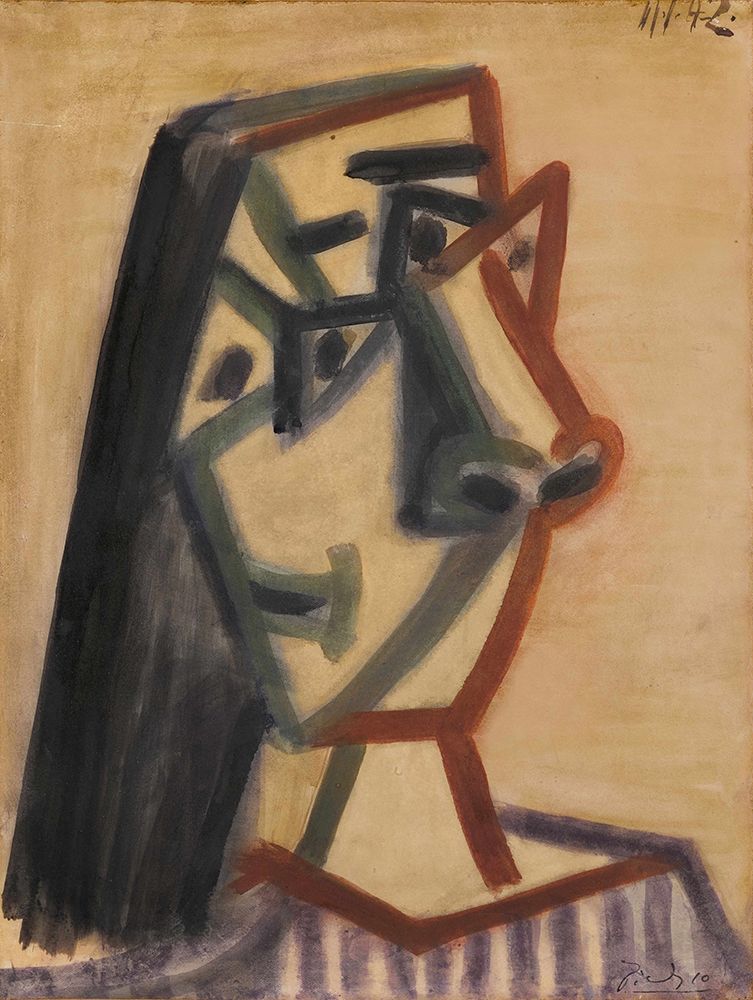
Pablo Picasso
Portrait de Dora Maar1942
Oil and gouache on paper mounted on canvas
41 x 30,6 cm I 16.1 x 12 in
In Portrait de Dora Maar, Picasso distorts the striking features he so loved about her, translating her flowing dark hair, seductive eyes and strong nose into angular, linear projections. A tight smile graces her lips in keeping with the later, post-Weeping Woman works, belying the complexities and strain of life in the midst of occupied France. The palette is muted, like so many of the artist’s war time works, which were often painted in the dim candlelight of the evening. Picasso’s keen draftsmanship pervades this work as his restrained handling of the paint and bold brevity of line achieve the impact of a much larger composition.
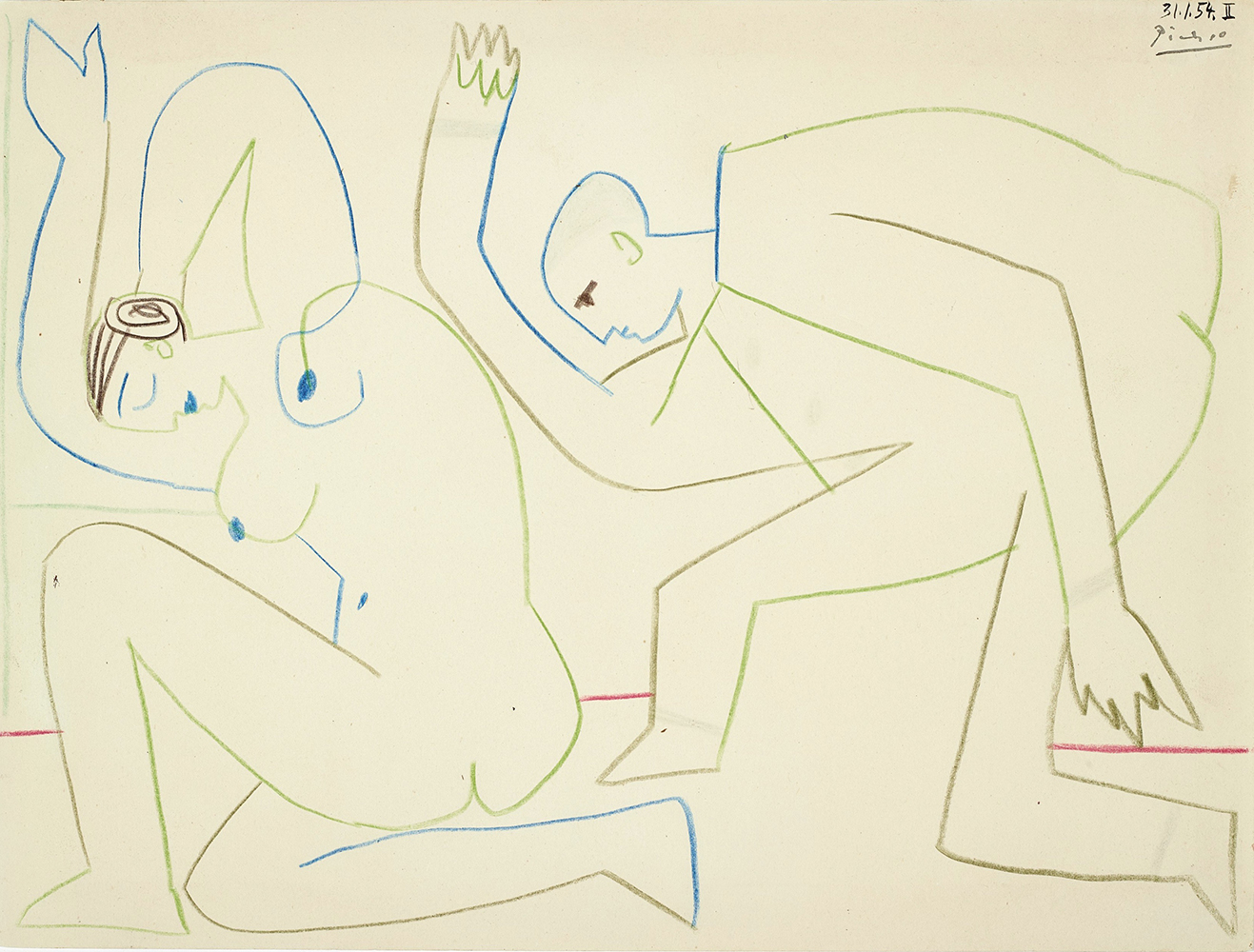
Pablo Picasso
La Répétition1954
Coloured pencil on paper
24 x 32 cm I 9.4 x 12.6 in
Marc Chagall drew inspiration from the theme of the circus throughout his life. As a child in Russia, he had been fascinated by the travelling acrobats he saw at village fairs. After he moved to Paris, he regularly attended the circus, where he would sit in the audience and sketch. The chaotic and colourful atmosphere of the circus captivated Chagall. Here, he saw all aspects of life represented, from the comic to the tragic. He later said, 'For me a circus is a magic show that appears and disappears like a world.' Circus performers, with their outlandish costumes and garish make-up, were ideal characters to populate Chagall's dreamlike compositions.
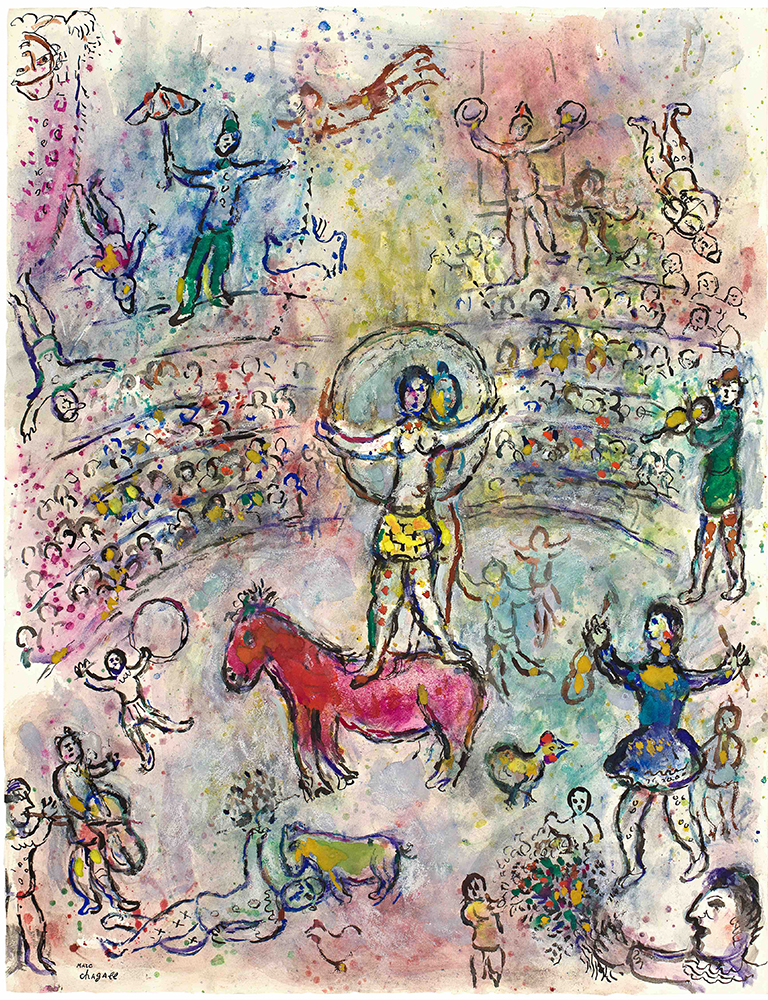
Marc Chagall
Scène de cirque aux écuyères sur cheval rougeCirca 1975
Tempera, gouache, india ink, coloured ink and pastel on paper
65,3 x 50,5 cm I 25.7 x 19.9 in

Marc Chagall
Amoureux au cheval rose, le soir1970
Gouache, pastel, coloured pencil, coloured ink, tempera and graphite on paper
51,4 x 36,2 cm I 20.2 x 14.3 in
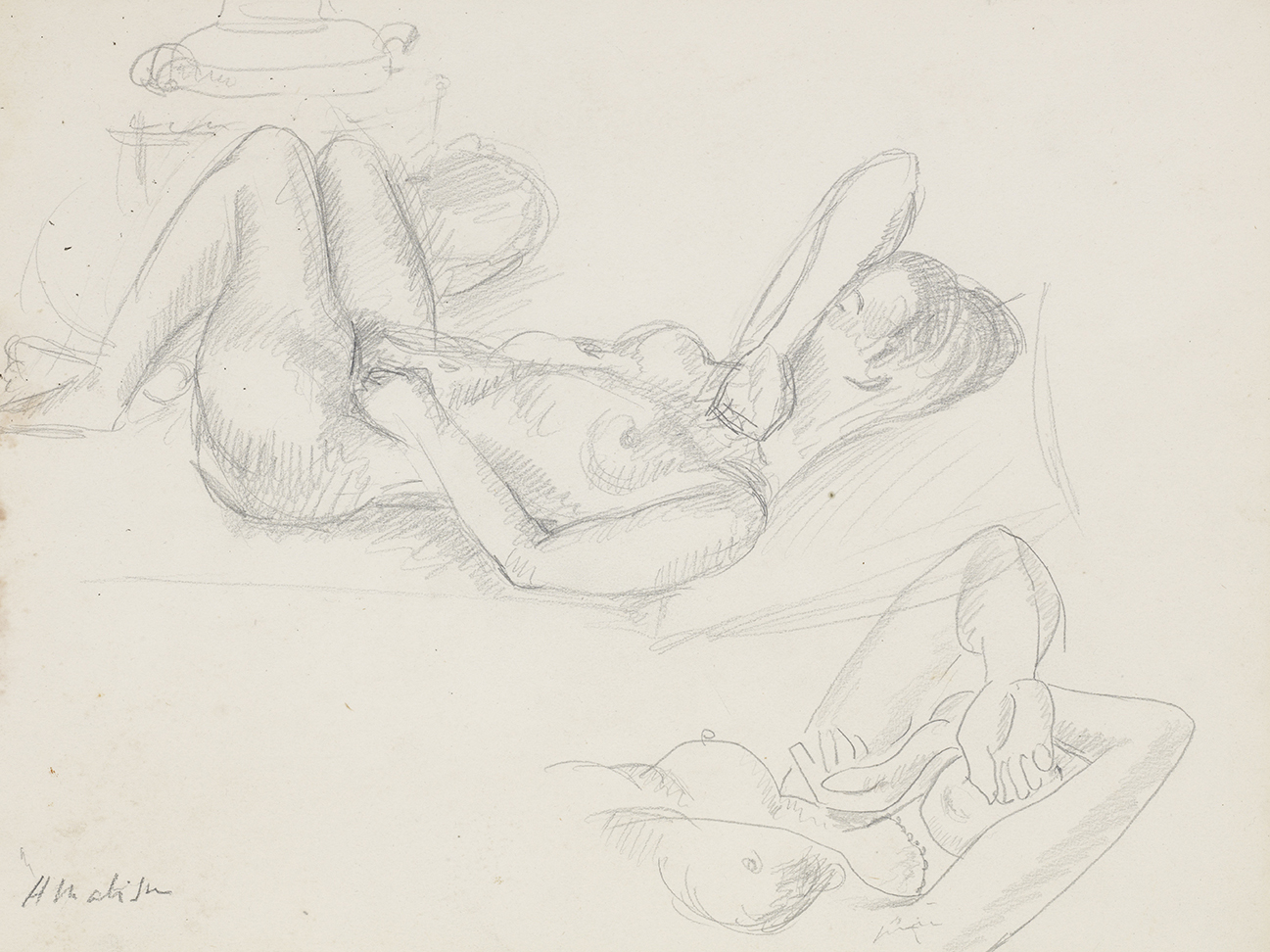
Henri Matisse
Étude de nu, visage couvert1927
Pencil on paper
27,6 x 37,8 cm I 10.9 x 14.9 in

Henri Matisse
Femme et bouquets1940
Pencil on paper
52,5 x 40,5 cm I 20.7 x 15.9 in
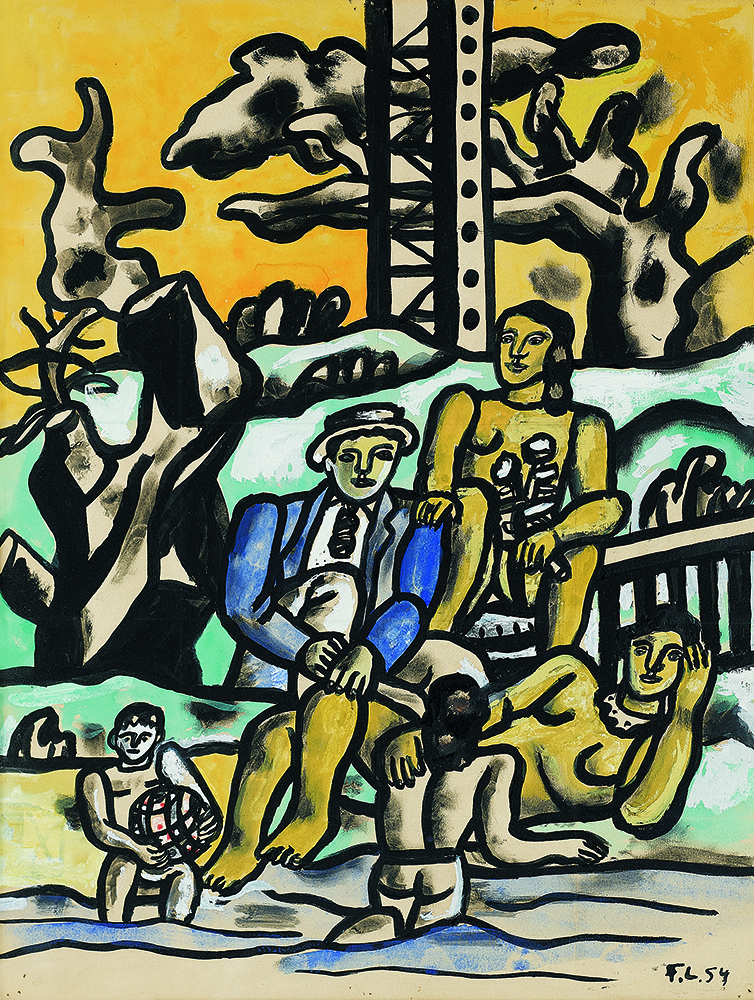
Fernand Léger
Étude pour « La Partie de Campagne »1954
Gouache on paper
65 x 50 cm I 25.6 x 19.7 in
Étude pour La Partie de Campagne belongs to an important series of ‘country outing’ works that Léger completed during the years just before his passing, between 1952 and 1954. This study recalls in a general way, Manet’s 1863 masterwork Le Déjeuner sur l’herbe, for the subject involves an arrangement of nude women and a clothed bourgeois gentleman in a pastoral setting. Léger was a lifelong admirer of Manet, considering the artist one of the most important innovators in the History of Art.
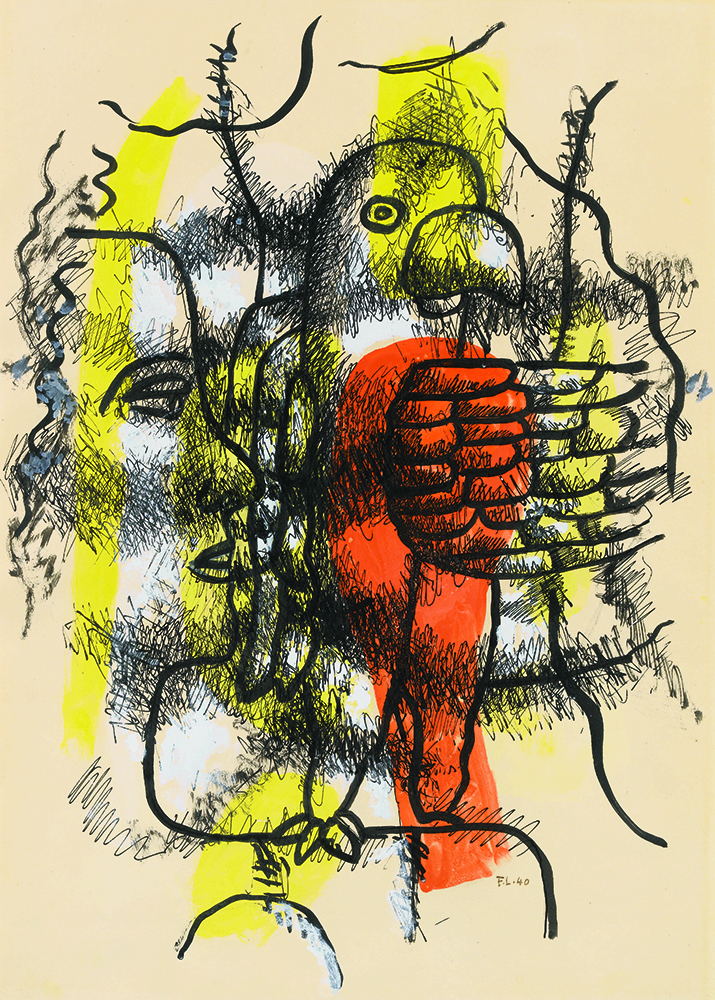
Fernand Léger
Profil et perroquet1940
Gouache, felt-pen and India ink on paper
55,7 x 38 cm | 21.9 x 15 in

Joan Miró
Untitled1934
Gouache on black paper
65 x 50 cm I 25.6 x 19.7 in
Alexander Calder began his artistic career as a painter, but only created his first series of works made in gouache during a year-long stay in Aix-en-Provence, France in 1953, in his mid-sixties. He would continue to work in this medium for the rest of his life, making works on paper in parallel to his sculptural practice.
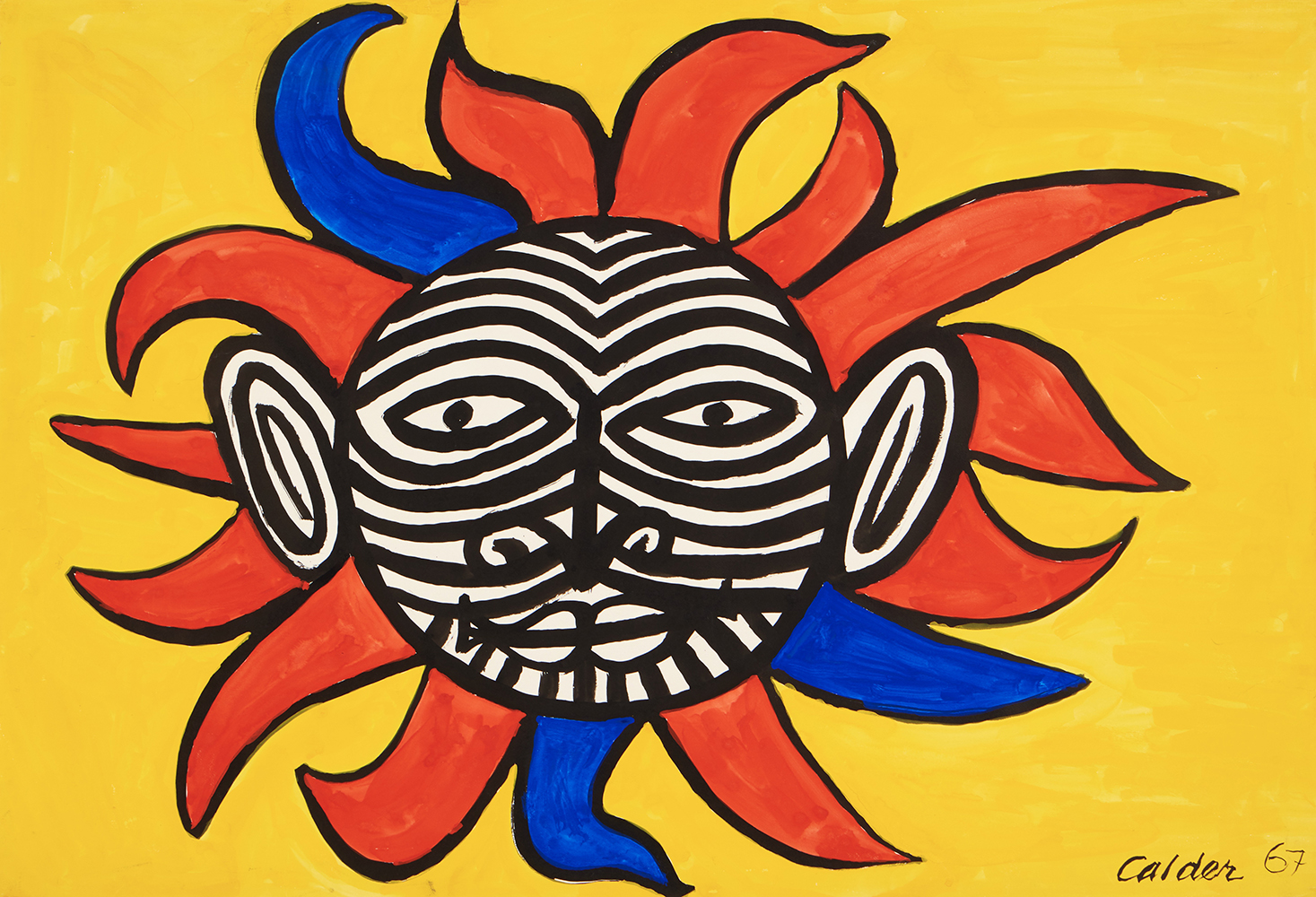
Alexander Calder
Soleil Noir
1967
Gouache and ink on paper
74,9 x 109,2 cm I 29.5 x 43 in

Alexander Calder
Lucioles
1972
Gouache and ink on paper
74,9 x 109,2 cm | 29.1 x 42.9 in
The two works exhibited display how using this more immediate medium, Calder could more easily transcribe the bold and vivid visual vocabulary of his sculptures into a two-dimensional form. Painting quickly and freely, he used exuberant lines and planes of his trademark primary colours, to describe the geometry and patterns, as well as the natural and metaphysical themes that inspired him.

Jean Dubuffet
Site au défunt
12 July 1982
Acrylic on paper laid down on canvas with 3 pasted pieces
67 x 100 cm I 26.4 x 39.4 in
'My desire is to make the site evoked by the picture something phantasmagoric; and that can be achieved only by jumbling together more or less veristic elements with interventions of arbitrary character aiming at unreality. I want my street to be crazy, my broad avenues, shops and buildings to join in a crazy dance, and that is why I deform and denature their contours and colours.’
Jean Dubuffet
Situation XCI (à l’arbre)17 February 1979
Black felt pen on paper
35 x 25,5 cm I 13.8 x 10 in

Georg Baselitz
Untitled (Mutter mit Kind – Pastorale)
1985
Graphite on paper
75,2 x 53,4 cm I 29.6 x 21 in
Georg Baselitz began painting his subjects upside down in 1969 in an effort to overcome the representational, content-driven character of his earlier work and stress the artifice of painting. Drawing from a myriad of influences, including art of Soviet era illustration art, the Mannerist period and African sculptures, he developed his own, distinct artistic language, often referring to his post WWII upbringing in Germany. To this day, he still inverts all his paintings, which has become his signature feature in his work.
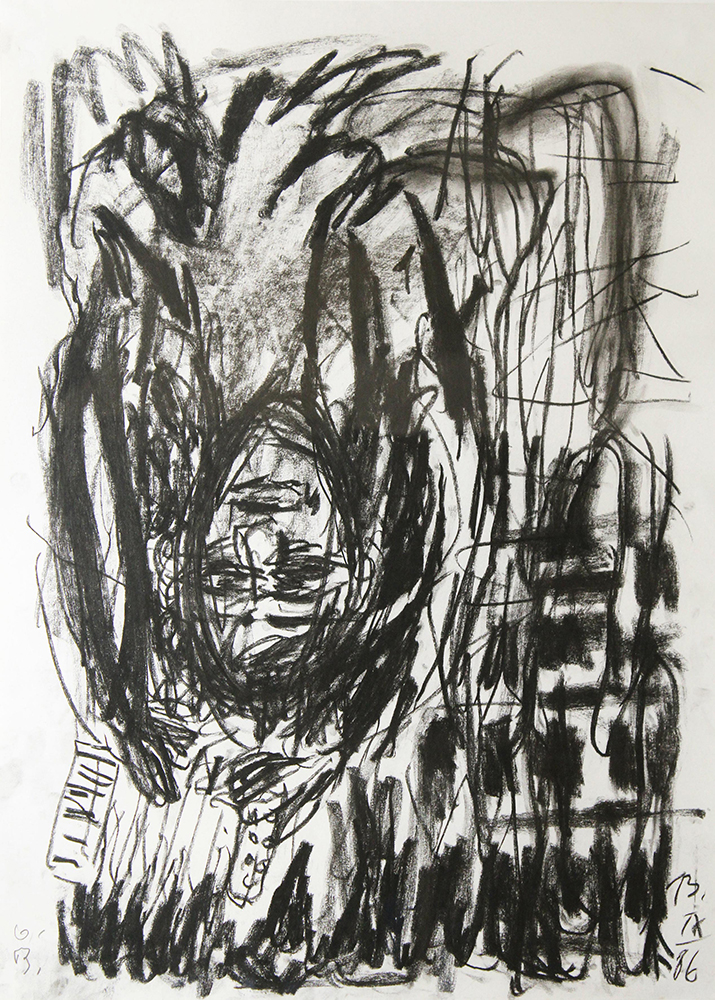
Georg Baselitz
Untitled (Girl with Accordion)1986
Charcoal on paper
60 x 46 cm I 23.6 x 18.1 in
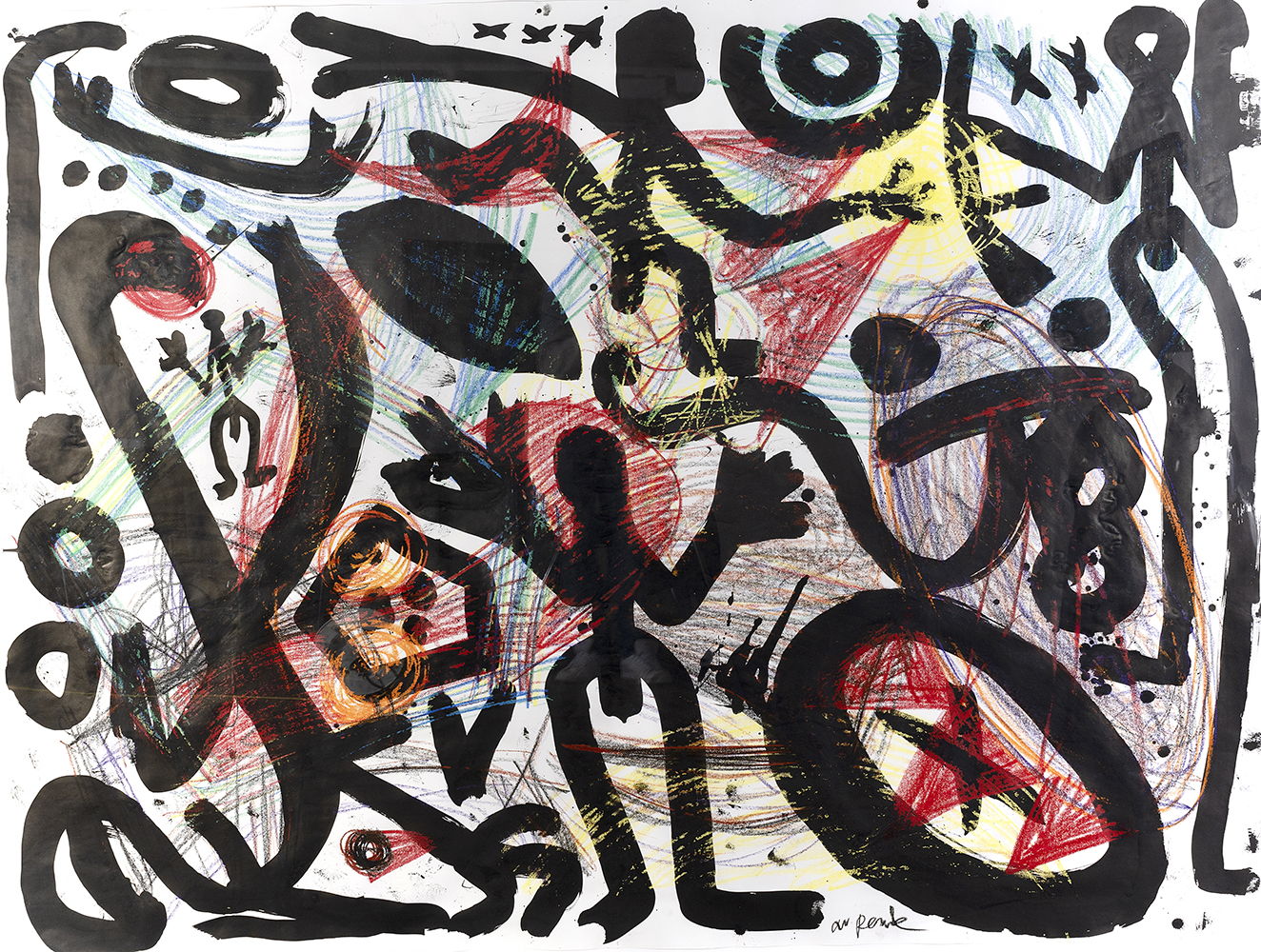
A.R. Penck
Untitled1990
Ink and wax crayon on paper
150 x 200 cm I 59.1 x 78.7 in
A.R. Penck is widely acknowledged for his ultimate achievement and compositional investigation, exploring the balance between pictorial figuration and abstraction in his own unique, non-traditional fashion. Taking its first impulses from visual systems like tribal art and hieroglyphics, his work is designed as a complex vocabulary of signs and symbols with universal comprehension that has the potential to analyse the relationship between the individual and society.
A.R. Penck
Untitled1981
India ink on paper mounted on canvas
94 x 121,9 cm | 37 x 48 in
Keith Haring's angel mermaid motif emerged from his subway drawings of 1982. Haring described the symbol as having grown from an evolution of dolphin and angel images, combined together. In Brazil Haring discovered the mermaid goddess 'Yemanja', worshipped by fishermen for protection at sea, and welcomed the association.

Keith Haring
Untitled1982
Red lumber crayon on Stonehenge paper
127 x 96,5 cm I 50 x 38 in
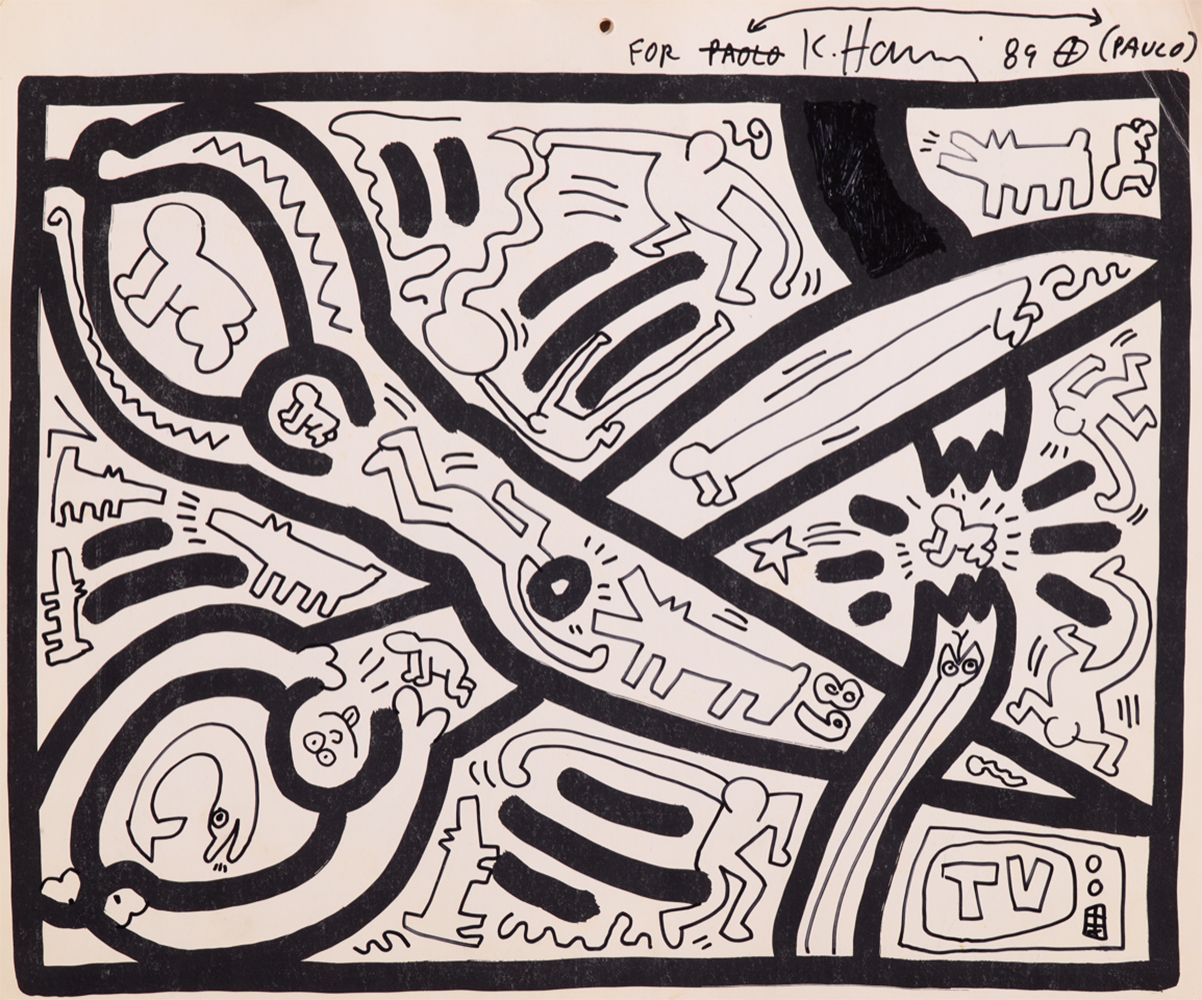
Keith Haring
Untitled1989
Marker on 20-month calendar, November page
30 x 35,5 cm I 11.8 x 14 in

George Condo
The Reporter #2
2017
Ink, graphite and coloured pencil on paper
159,4 x 131,4 cm I 62.8 x 51.7 in
Since the beginning of his career, drawings and works on paper have formed an important part of George Condo’s working practice. Condo tries to explore the relationship between the directness of drawing and the controlled methods of painting. He stated; “My intention with this work was to explore the extreme possibilities of the ink on paper”.
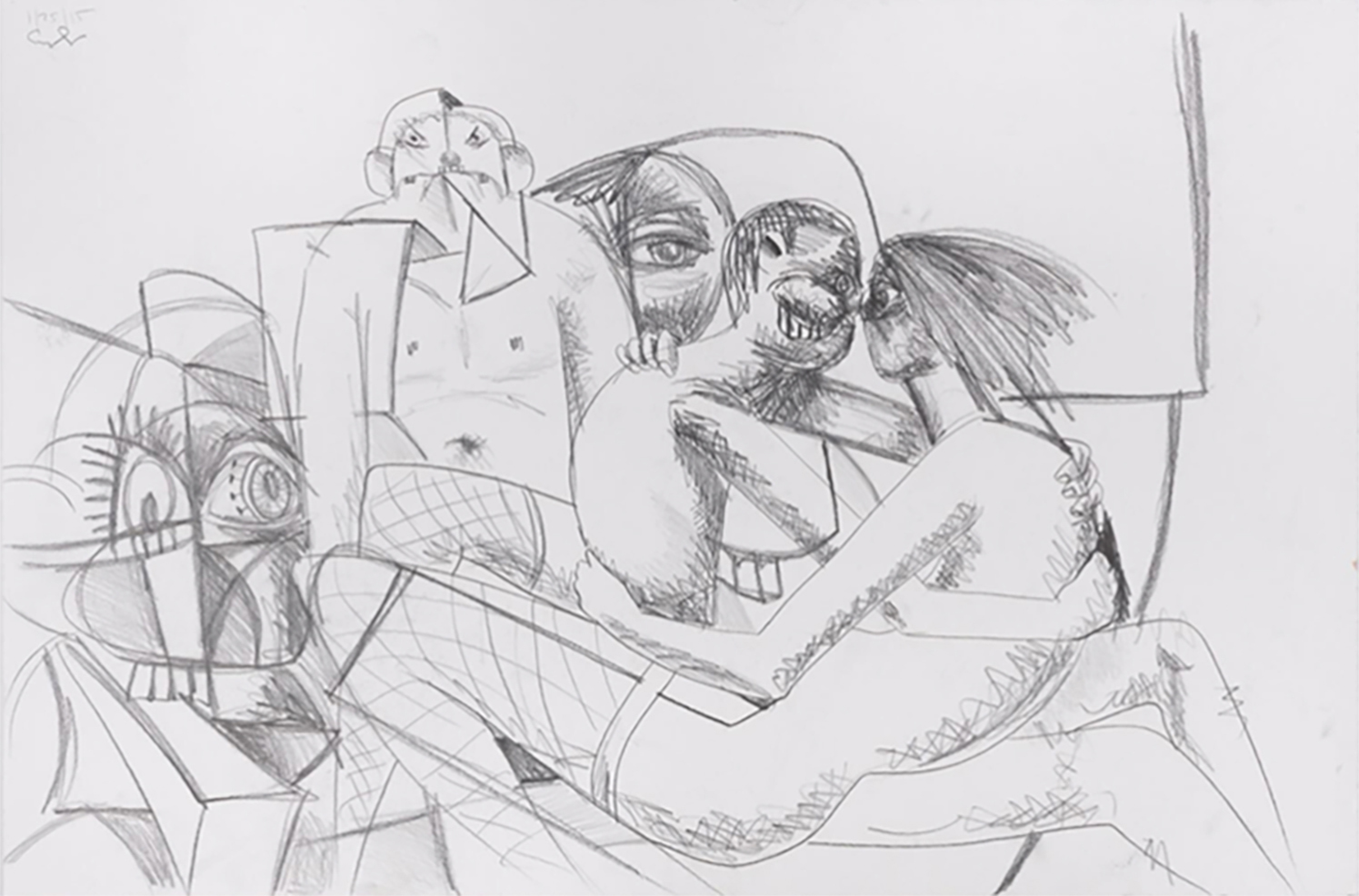
George Condo
Untitled2015
Graphite on paper
76,8 x 111,8 cm I 30.2 x 44 in

